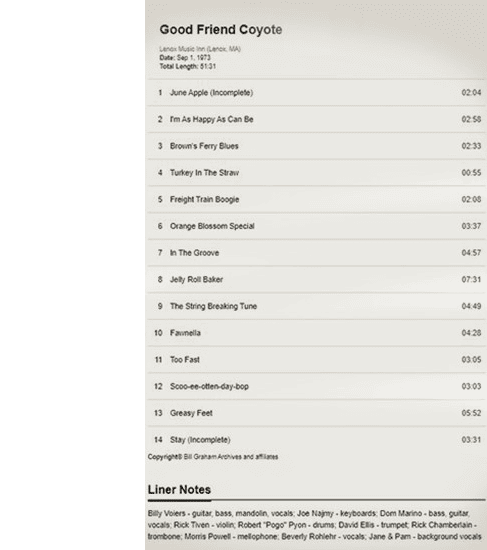Good Friend Coyote
Lineup:
June Apple
In today’s age of instant information, it is highly unusual to not be able to find out anything about a band, especially one that is featured on Wolfgang’s Vault download list. But that is the case with Good Friend Coyote, a group that barely seemed to exist, except on Wolfgang’s Vault, at least from an internet standpoint. After hours of research, I did discover that they were based out of Berkshire, MA and toured New England for 18 months in the 1972 to 1974 timeframe. Their members were all highly competent musicians, with jazz, swing, country, classical, rock, and blues backgrounds. At least two of them attended New England Conservatory and nearly all of them had successful musical careers after the band dissolved. They reunited for an one time show in 2012 and they were closely associated with the jazz scene around the Lenox School Of Jazz and the Music Inn in Lenox and Stockbridge, MA.
